Detection of Ionospheric Scintillation Based on XGBoost Model Improved by SMOTE-ENN Technique
Abstract
:1. Introduction
- (1)
- To propose a high-performance detection method for XGBoost based on the decision tree algorithm, assuring good overall detection accuracy for three intensities of ionospheric scintillation;
- (2)
- To compare with decision tree and random forest based on cross-validation, proving the superior accuracy of the XGBoost algorithm and mitigation of the overfitting problem;
- (3)
- To compare different resampling techniques for an imbalanced dataset consisting of a majority of weak/medium scintillation events and a minority of strong scintillation events, proving the great performance of SMOTE-ENN according to evaluation indicators;
- (4)
- To make a brief overall comparison with the decision tree, random forest, SVM and CNN, evaluating the performance in terms of accuracy, computational load and applicability, focusing on detailed comparison with the first two methods with high performance hereafter;
- (5)
- To evaluate the performance of the proposed improved method on different degrees of imbalanced training datasets and testing datasets, respectively, proving the effectiveness in enhancing the detection accuracy for strong scintillation events.
2. General Overviews
2.1. GNSS Ionospheric Scintillation
2.2. Data Collection System
2.3. Feature Extraction
3. Methodology
3.1. XGBoost Algorithm
3.2. SMOTE-ENN Resampling Technique
4. Results
4.1. Evaluation Criterion
4.2. Accuracy Evaluation on Cross Validation
4.3. Performance with Different Resampling Algorithms
4.4. Analysis on Imbalanced Training Datasets
4.5. Analysis on Imbalanced Testing Datasets
5. Discussion
6. Conclusions
- (1)
- The machine learning method of XGBoost was proposed to improve the overall detection accuracy. According to 10 cross-validations, the accuracy was better than that of the decision tree and random forest. Meanwhile, XGBoost demonstrated sufficient validation accuracy when the tree depth was set to a small value, which not only significantly simplified the model complexity, but also effectively alleviated the overfitting problem.
- (2)
- Aiming at dealing with imbalance, different resampling techniques were compared based on the XGBoost detection model. SMOTE-ENN outperformed the other techniques on the whole. Moreover, similar improvements were observed for the decision tree and random forest detection models, after the SMOTE-ENN resampling technique, while the improved XGBoost performed better than the other methods.
- (3)
- As for training datasets with different degrees of imbalance in classes 0/1/2, with ratios ranging from 1:1:1 to 7:7:1, different detection models and corresponding models improved by SMOTE-ENN were trained and then tested on the same novel dataset. The results showed overall enhancements for the improved detection methods compared to the corresponding raw methods, among which the improved XGBoost method showed the best performance.
- (4)
- The improved methods were tested with different degrees of imbalance in real data to evaluate the performance of the improved XGBoost. The results show distinct enhancements in overall accuracy, recall for class 2 and F1 scores for class 2, proving significant improvements in detecting severe scintillation events as well as reducing the problem of missing important events.
Author Contributions
Funding
Data Availability Statement
Acknowledgments
Conflicts of Interest
References
- Cai, X.; Burns, A.G.; Wang, W.; Qian, L.; Liu, J.; Solomon, S.C.; Eastes, R.W.; Daniell, R.E.; Martinis, C.R.; McClintock, W.E. Observation of Postsunset OI 135.6 nm radiance enhancement over South America by the GOLD mission. J. Geophys. Res. Space Phys. 2020, 126, 2020JA028108. [Google Scholar]
- Karan, D.K.; Daniell, R.E.; England, S.L.; Martinis, C.R.; Eastes, R.W.; Burns, A.G.; McClintock, W.E. Early morning equatorial ionization anomaly from GOLD observations. J. Geophys. Res. Space Phys. 2020, 125, 2019JA027487. [Google Scholar]
- Karan, D.K.; Daniell, R.E.; England, S.L.; Martinis, C.R.; Eastes, R.W.; Burns, A.G.; Mcclintock, W.E. First zonal drift velocity measurement of Equatorial Plasma Bubbles (EPBs) from a geostationary orbit using GOLD data. J. Geophys. Res. Space Phys. 2020, 125, e2020JA028173. [Google Scholar] [CrossRef]
- Martinis, C.; Daniell, R.; Eastes, R.; Norrell, J.; Smith, J.; Klenzing, J.; Solomon, S.; Burns, A. Longitudinal variation of post-sunset plasma depletions from the Global-scale Observations of the Limb and Disk (GOLD) mission. J. Geophys. Res. Space Phys. 2020, 126, 2020JA028510. [Google Scholar]
- Liu, J.; Wang, W.; Burns, A.; Solomon, S.C.; Zhang, S.; Zhang, Y.; Huang, C. Relative importance of horizontal and vertical transports to the formation of ionospheric storm-enhanced density and polar tongue of ionization. J. Geophys. Res. Space Phys. 2016, 121, 8121–8133. [Google Scholar] [CrossRef]
- Basu, S.; MacKenzie, E.; Basu, S. Ionospheric constraints on VHF/UHF communications links during solar maximum and minimum periods. Radio Sci. 1988, 23, 363–378. [Google Scholar] [CrossRef]
- Sreeja, V.; Aquino, M.; Elmas, Z.G. Impact of ionospheric scintillation on GNSS receiver tracking performance over Latin America: Introducing the concept of tracking jitter variance maps. Space Weather 2011, 9, S10002. [Google Scholar] [CrossRef]
- Aarons, J.; Whitney, H.E.; Allen, R.S. Global morphology of ionospheric scintillations. Proc. IEEE 1971, 59, 159–172. [Google Scholar] [CrossRef]
- Knepp, D.L. Radar measurement of ionospheric scintillation in the polar region. Radio Sci. 2015, 50, 968–982. [Google Scholar] [CrossRef]
- Jiao, Y.; Morton, Y.T. Comparison of the effect of high-latitude and equatorial ionospheric scintillation on GPS signals during the maximum of solar cycle 24. Radio Sci. 2015, 50, 886–903. [Google Scholar] [CrossRef]
- Prasad, S.N.V.S.; Rama Rao, P.V.S.; Prasad, D.S.V.V.D.; Venkatesh, K.; Niranjan, K. Morphological studies on ionospheric VHF scintillations over an Indian low latitude station during a solar cycle period (2001–2010). Adv. Space Res. 2012, 50, 56–69. [Google Scholar] [CrossRef]
- Banville, S.; Langley, R.B.; Saito, S.; Yoshihara, T. Handling cycle slips in GPS data during ionospheric plasma bubble events. Radio Sci. 2010, 45, 1–14. [Google Scholar] [CrossRef]
- Ji, S.; Chen, W.; Weng, D.; Wang, Z.; Ding, X. A study on cycle slip detection and correction in case of ionospheric scintillation. Adv. Space Res. 2013, 51, 742–753. [Google Scholar] [CrossRef]
- Taylor, S.; Morton, Y.; Jiao, Y.; Triplett, J.; Pelgrum, W. An improved ionosphere scintillation event detection and automatic trigger for a GNSS data collection system. In Proceedings of the Institute of Navigation International Technical Meeting 2012, Newport Beach, CA, USA, 30 January–1 February 2012; pp. 1563–1569. [Google Scholar]
- Dubey, S.; Wahi, R.; Gwal, A.K. Ionospheric effects on GPS positioning. Adv. Space Res. 2006, 38, 2478–2484. [Google Scholar] [CrossRef]
- Linty, N.; Farasin, A.; Favenza, A.; Dovis, F. Detection of GNSS ionospheric scintillations based on machine learning decision tree. IEEE Trans. Aerosp. Electron. Syst. 2019, 55, 303–317. [Google Scholar] [CrossRef]
- Mushini, S.C.; Jayachandran, P.T.; Langley, R.B.; MacDougall, J.W.; Pokhotelov, D. Improved amplitude- and phase-scintillation indices derived from wavelet detrended high-latitude GPS data. GPS Solut. 2012, 16, 363–373. [Google Scholar] [CrossRef]
- Ouassou, M.; Kristiansen, O.; Gjevestad, J.G.O.; Jacobsen, K.S.; Andalsvik, Y.L. Estimation of scintillation indices: A novel approach based on local kernel regression methods. Int. J. Navig. Obs. 2016. [Google Scholar] [CrossRef]
- Jiao, Y.; Hall, J.; Morton, Y. Performance evaluations of an equatorial GPS amplitude scintillation detector using a machine learning algorithm. In Proceedings of the 29th International Technical Meeting of the Satellite Division of the Institute of Navigation, Portland, OR, USA, 12–16 September 2016; pp. 195–199. [Google Scholar]
- Jiao, Y.; Hall, J.J.; Morton, Y.T. Automatic equatorial GPS amplitude scintillation detection using a machine learning algorithm. IEEE Trans. Aerosp. Electron. Syst. 2017, 53, 405–418. [Google Scholar] [CrossRef]
- Jiao, Y.; Hall, J.; Morton, Y. Automatic GPS phase scintillation detector using a machine learning algorithm. In Proceedings of the 2017 International Technical Meeting of The Institute of Navigation, Monterey, CA, USA, 30 January–2 February 2017; pp. 1160–1172. [Google Scholar]
- Jiao, Y.; Hall, J.J.; Morton, Y.T. Performance Evaluation of an automatic GPS ionospheric phase scintillation detector using a machine-learning algorithm. Navig. J. Inst. Navig. 2017, 64, 391–402. [Google Scholar] [CrossRef]
- Lin, M.; Zhu, X.; Luo, Y.; Yang, F. Analysis of ionospheric scintillation detection based on machine learning. In Proceedings of the International Conference on Sensing, Measurement and Data Analytics in the Era of Artificial Intelligence, Xi’an, China, 15–17 October 2020; pp. 357–361. [Google Scholar]
- Ludwig-Barbosa, V.; Sievert, T.; Carlström, A.; Pettersson, M.I.; Vu, V.T.; Rasch, J. Supervised detection of ionospheric scintillation in low-latitude radio occultation measurements. Remote Sens. 2021, 13, 1690. [Google Scholar] [CrossRef]
- Ferre, R.M.; Fuente, A.D.L.; Lohan, E.S. Jammer classification in GNSS bands via machine learning algorithms. Sensors 2019, 19, 5–7. [Google Scholar]
- Munin, E.; Blais, A.; Couellan, N. GNSS multipath detection using embedded deep CNN on Intel (R) Neural Compute Stick. In Proceedings of the 33rd International Technical Meeting of the Satellite Division of the Institute of Navigation, Online, 21–25 September 2020; pp. 2018–2029. [Google Scholar]
- Suzuki, T.; Kusama, K.; Amano, Y. NLOS multipath detection using convolutional neural network. In Proceedings of the 33rd International Technical Meeting of the Satellite Division of the Institute of Navigation, Online, 21–25 September 2020; pp. 2989–3000. [Google Scholar]
- Li, J.; Zhu, X.; Ouyang, M.; Li, W.; Chen, Z.; Dai, Z. Research on multi-peak detection of small delay spoofing signal. IEEE Access 2020, 8, 151777–151787. [Google Scholar] [CrossRef]
- Franzese, G.; Linty, N.; Dovis, F. Semi-supervised GNSS scintillations detection based on deepinfomax. Appl. Sci. 2020, 10, 381. [Google Scholar] [CrossRef] [Green Version]
- Dogo, E.M.; Nwulu, N.I.; Twala, B.; Aigbavboa, C. Accessing imbalance learning using dynamic selection approach in water quality anomaly detection. Symmetry 2021, 13, 818. [Google Scholar] [CrossRef]
- Luo, X.; Lou, Y.; Xiao, Q.; Gu, S.; Chen, B.; Liu, Z. Investigation of ionospheric scintillation effects on BDS precise point positioning at low-latitude regions. GPS Solut. 2018, 22, 1–12. [Google Scholar] [CrossRef]
- Marlia, D.; Wu, F.; Ekawati, S.; Anggarani, S.; Ahmed, W.A.; Nofri, E.; Byambakhuu, G. Ionospheric scintillation mapping at low latitude: Over Indonesia. In Proceedings of the International Geoscience and Remote Sensing Symposium, Fort Worth, TX, USA, 23–28 July 2015; pp. 21–24. [Google Scholar]
- Vadakke Veettil, S.; Aquino, M.; Marques, H.A.; Moraes, A. Mitigation of ionospheric scintillation effects on GNSS precise point positioning (PPP) at low latitudes. J. Geod. 2020, 94, 1–10. [Google Scholar] [CrossRef] [Green Version]
- Jiao, Y.; Morton, Y.; Taylor, S.; Pelgrum, W. High latitude ionosphere scintillation characterization. In Proceedings of the Institute of Navigation International Technical Meeting, San Diego, CA, USA, 28–30 January 2013; pp. 579–584. [Google Scholar]
- Merid, A.; Nigussie, M.; Ayele, A. Investigation of the characteristics of wavelike oscillations of post-sunset equatorial ionospheric irregularity by decomposing fluctuating TEC. Adv. Space Res. 2021, 67, 1210–1221. [Google Scholar] [CrossRef]
- Guo, R. Statistical Studies of Radio Wave Amplitude and Phase Scintillation in the Ionosphere. Master’s Thesis, Wuhan University, Wuhan, China, 2019. [Google Scholar]
- Spogli, L.; Alfonsi, L.; Romano, V.; De Franceschi, G.; Joao Francisco, G.M.; Hirokazu Shimabukuro, M.; Bougard, B.; Aquino, M. Assessing the GNSS scintillation climate over Brazil under increasing solar activity. J. Atmos. Solar-Terr. Phys. 2013, 105–106, 199–206. [Google Scholar] [CrossRef]
- Taylor, S.; Morton, Y.; Marcus, R.; Bourne, H.; Pelgrum, W.; Van Dierendonck, A.J. Ionospheric scintillation receivers performances based on high latitude experiments. In Proceedings of the Institute of Navigation Pacific Positioning, Navigation and Timing Meeting, Honolulu, HI, USA, 22–25 April 2013; pp. 743–751. [Google Scholar]
- Xu, D.; Morton, Y.; Akos, D.; Walter, T. GPS multi-frequency carrier phase characterization during strong equatorial ionospheric scintillation. In Proceedings of the 28th International Technical Meeting of the Satellite Division of the Institute of Navigation, Tampa, FL, USA, 14–18 September 2015; pp. 3787–3796. [Google Scholar]
- Sun, P. Study on Key Techniques of the Satellite Navigation Signals Carrier Tracking in the Presence of Ionospheric Scintillation. Ph.D. Thesis, Graduate School of National University of Defense Technology, Changsha, China, March 2017. [Google Scholar]
- Chen, T.; Guestrin, C. XGBoost: A scalable tree boosting system. In Proceedings of the 22nd ACM SIGKDD International Conference on Knowledge Discovery and Data Mining, San Francisco, CA, USA, 13–17 August 2016; pp. 785–794. [Google Scholar]
- He, H.; Garcia, E.A. Learning from imbalanced data. IEEE Trans. Knowl. Data Eng. 2009, 21, 1263–1284. [Google Scholar]
- Wilson, D.L. Asymptotic properties of nearest neighbor rules using edited data. IEEE Trans. Syst. Man Cybern. 1972, 2, 408–421. [Google Scholar] [CrossRef] [Green Version]
- Tomek, I. Two modifications of CNN. IEEE Trans. Syst. Man Cybern. 1976, 6, 769–772. [Google Scholar]
- Hart, P.E. The condensed nearest neighbor rule. IEEE Trans. Inf. Theory 1967, 14, 515–516. [Google Scholar] [CrossRef]
- Laurikkala, J. Improving identification of difficult small classes by balancing class distribution. In Proceedings of the 8th Conference on Artificial Intelligence in Medicine in Europe, Cascais, Portugal, 1–4 July 2001; pp. 63–66. [Google Scholar]
- Chawla, N.V.; Bowyer, K.W.; Hall, L.O.; Kegelmeyer, W.P. SMOTE: Synthetic minority over-sampling technique nitesh. J. Artif. Intell. Res. 2002, 16, 321–357. [Google Scholar] [CrossRef]
- Han, H.; Wang, W.; Mao, B. Borderline-SMOTE: A new over-sampling method in imbalanced data sets learning. In Proceedings of the Advances in Intelligent Computing—International Conference on Intelligent Computing, Hefei, China, 23–26 August 2005; pp. 878–887. [Google Scholar]
- Batista, G.E.A.P.A.; Prati, R.C.; Monard, M.C. A study of the behavior of several methods for balancing machine learning training data. ACM SIGKDD Explor. Newsl. 2004, 6, 20–29. [Google Scholar] [CrossRef]
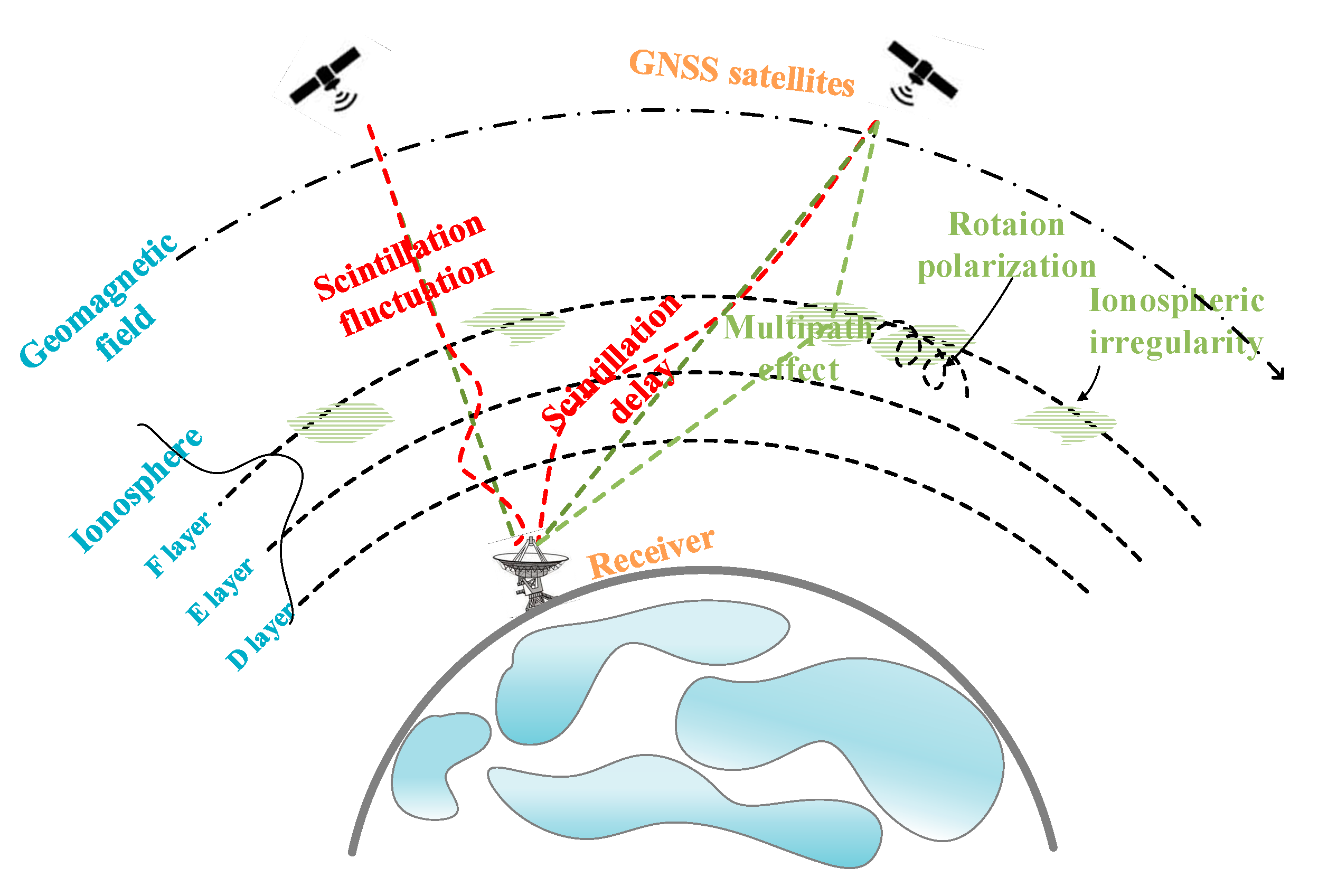
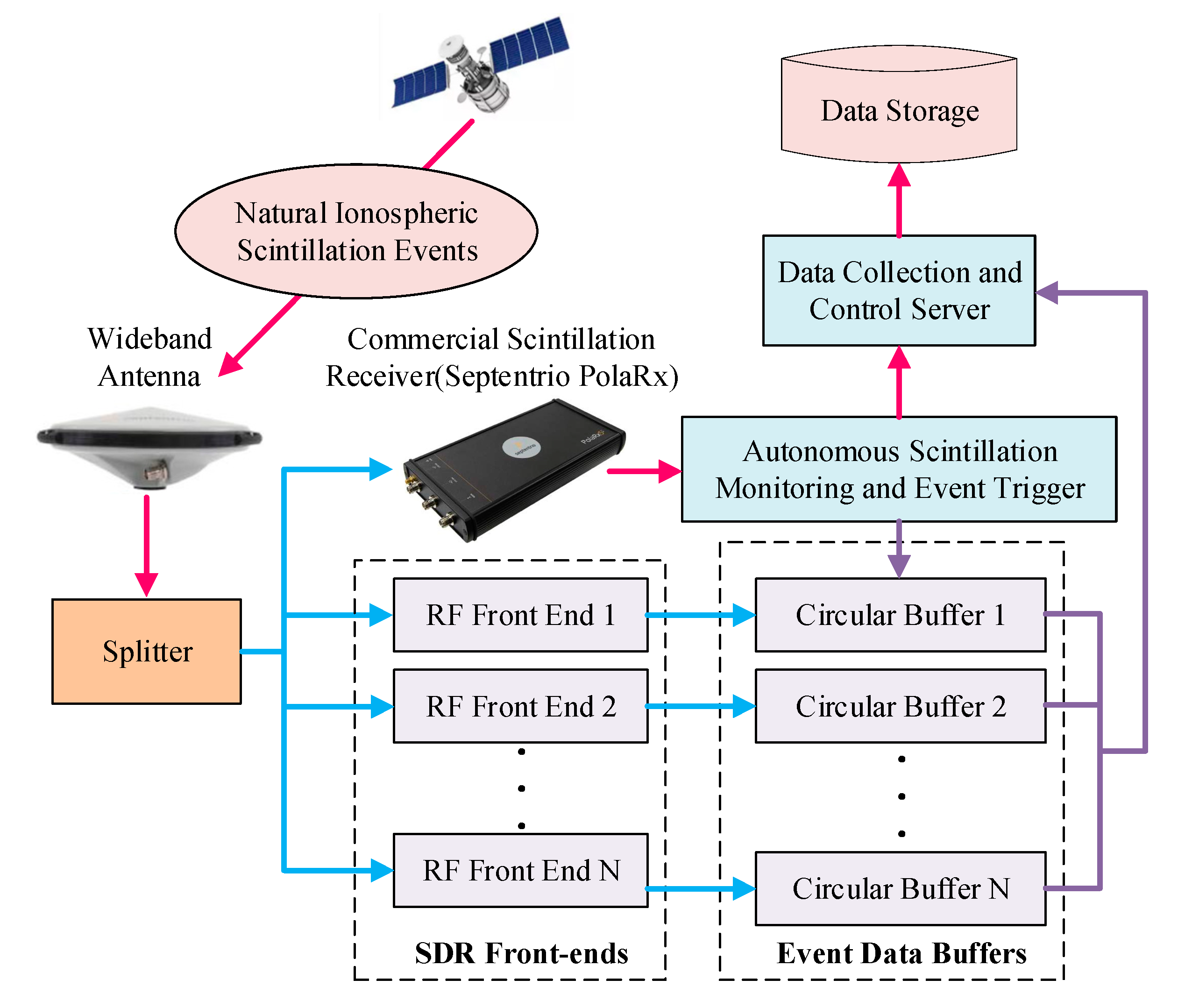
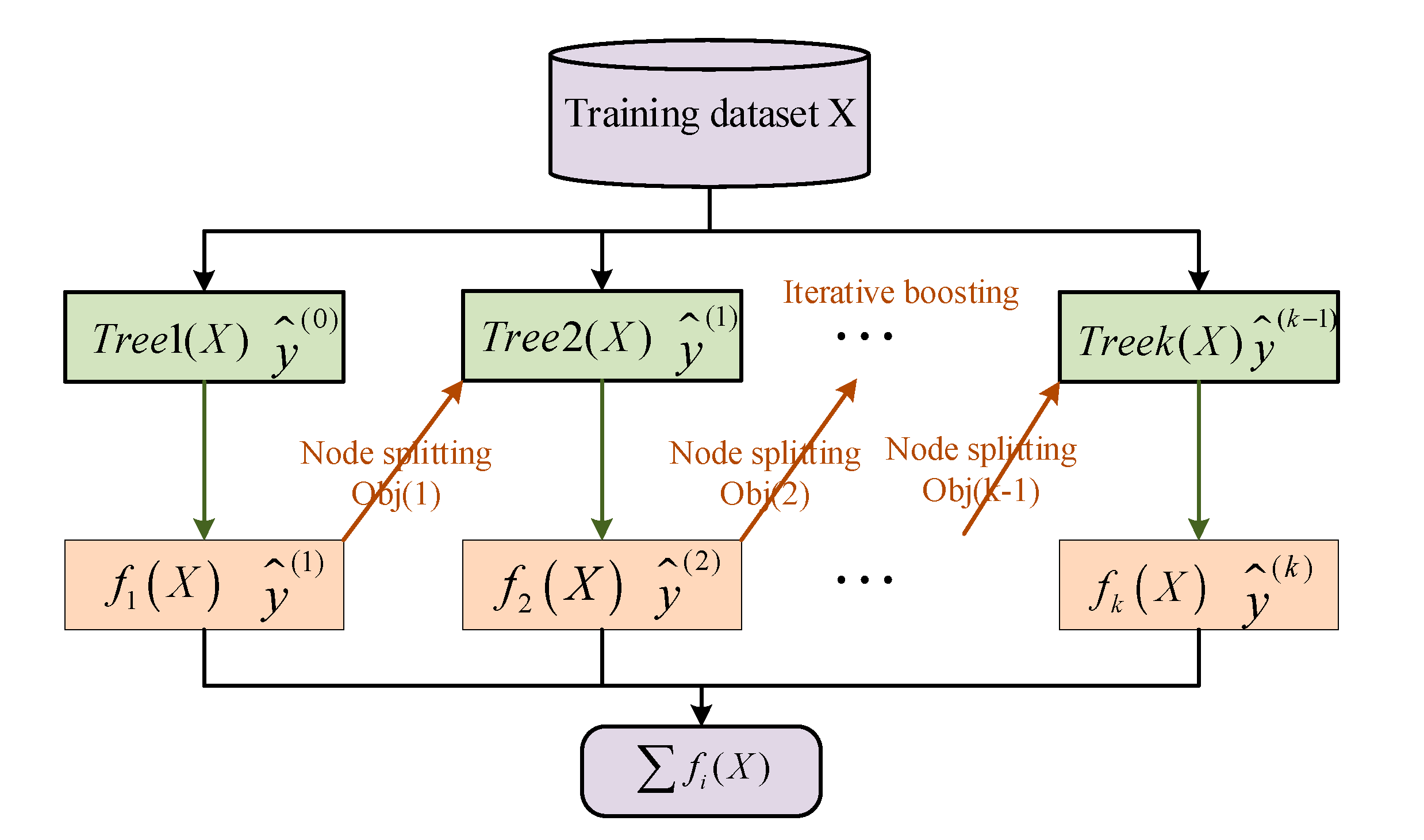
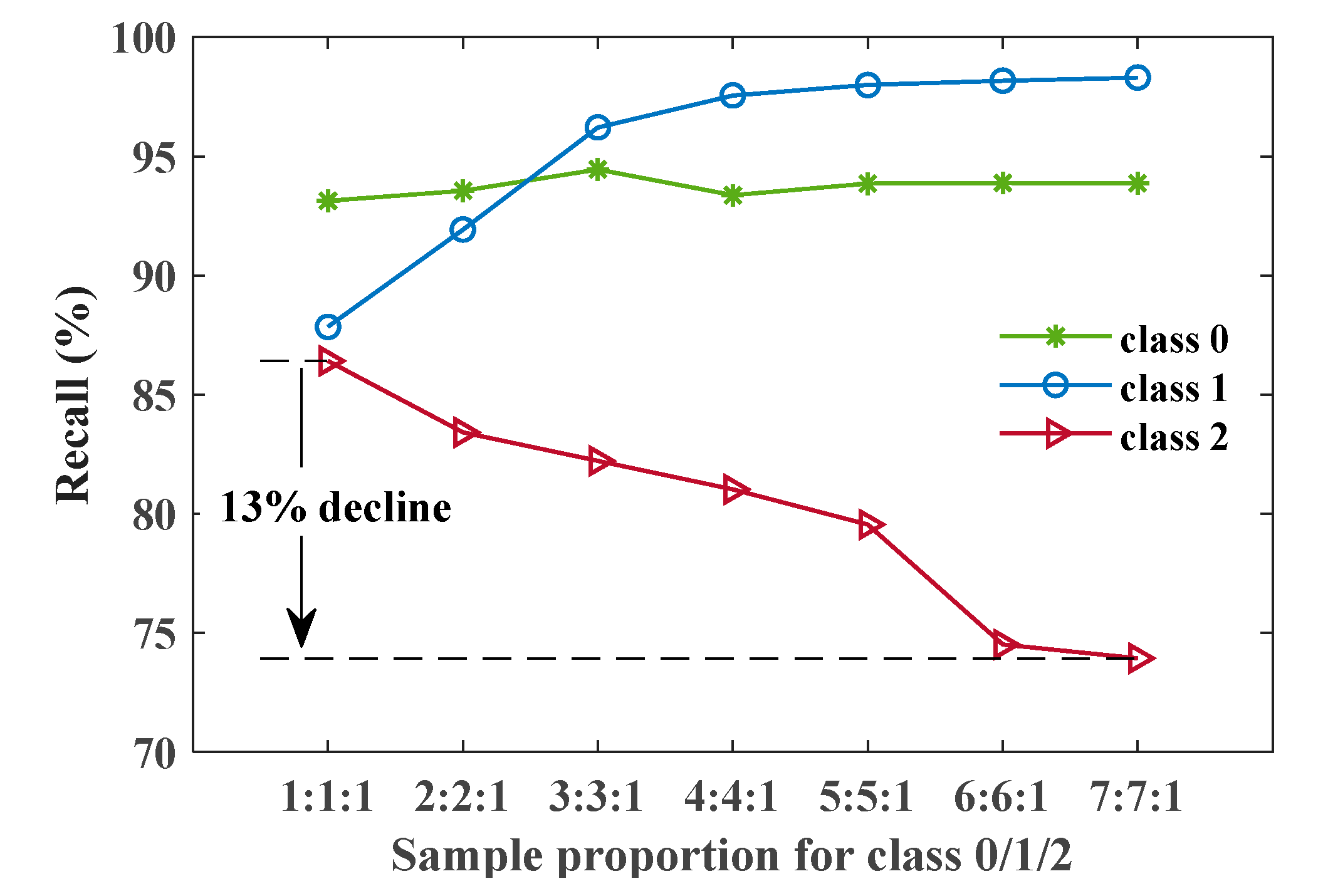
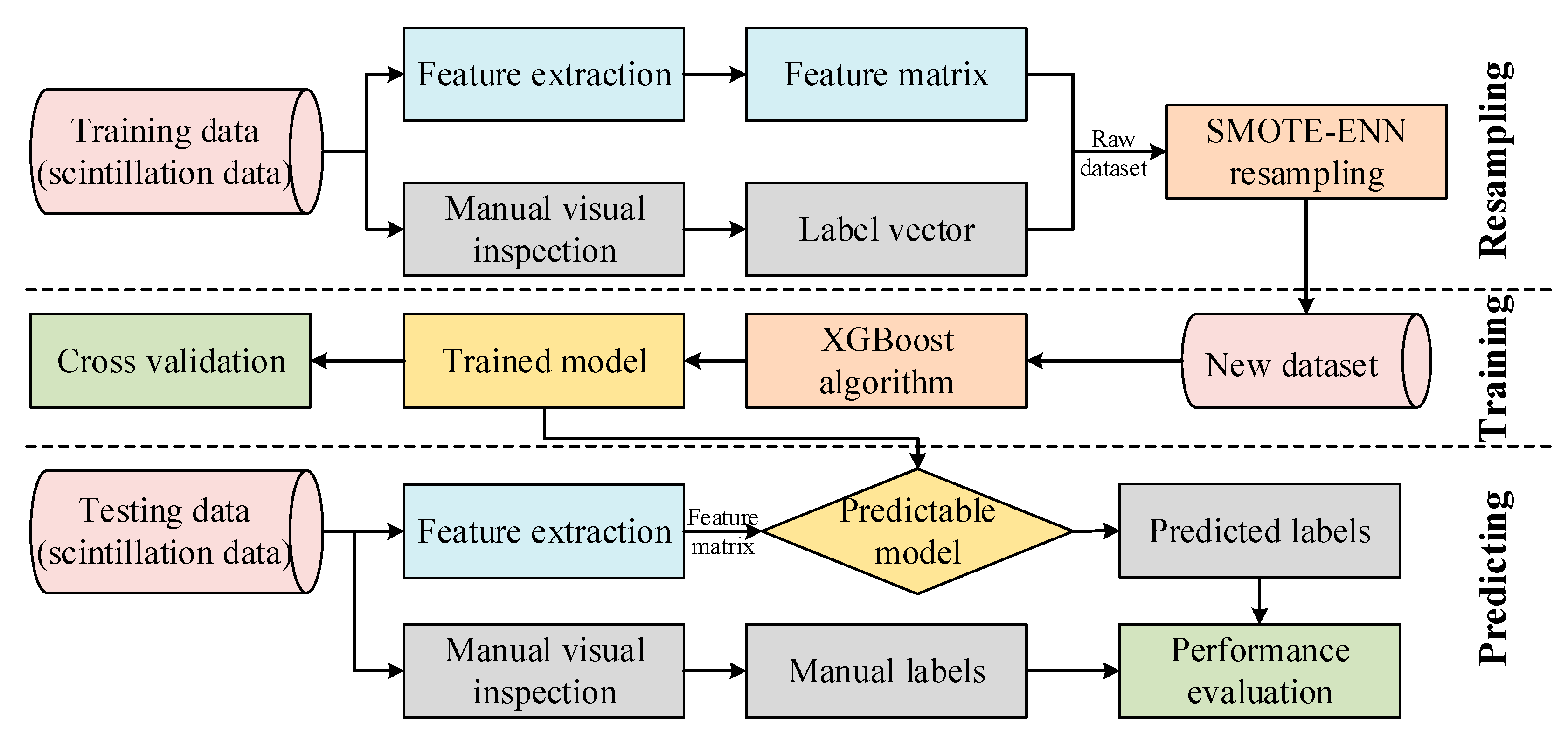
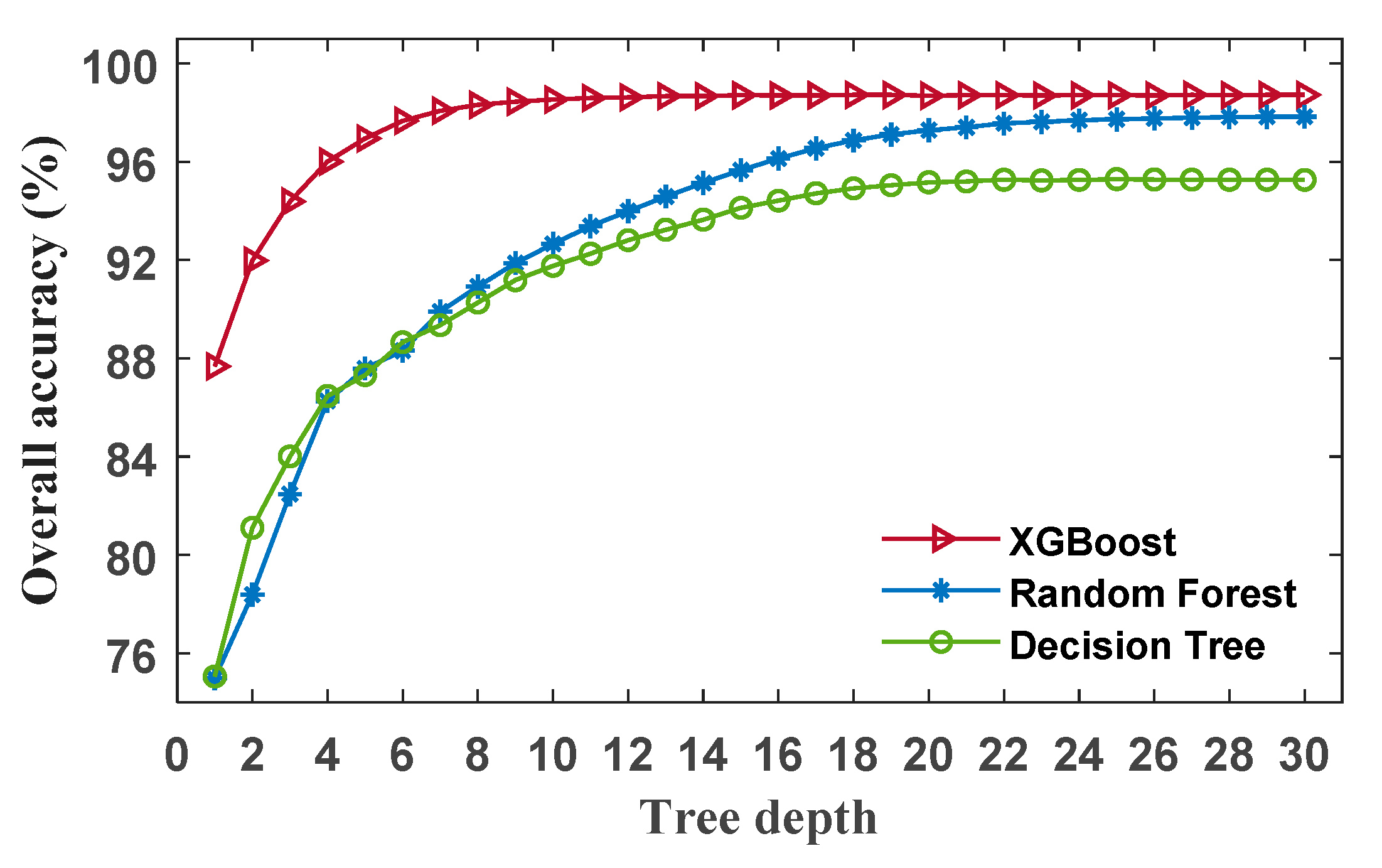
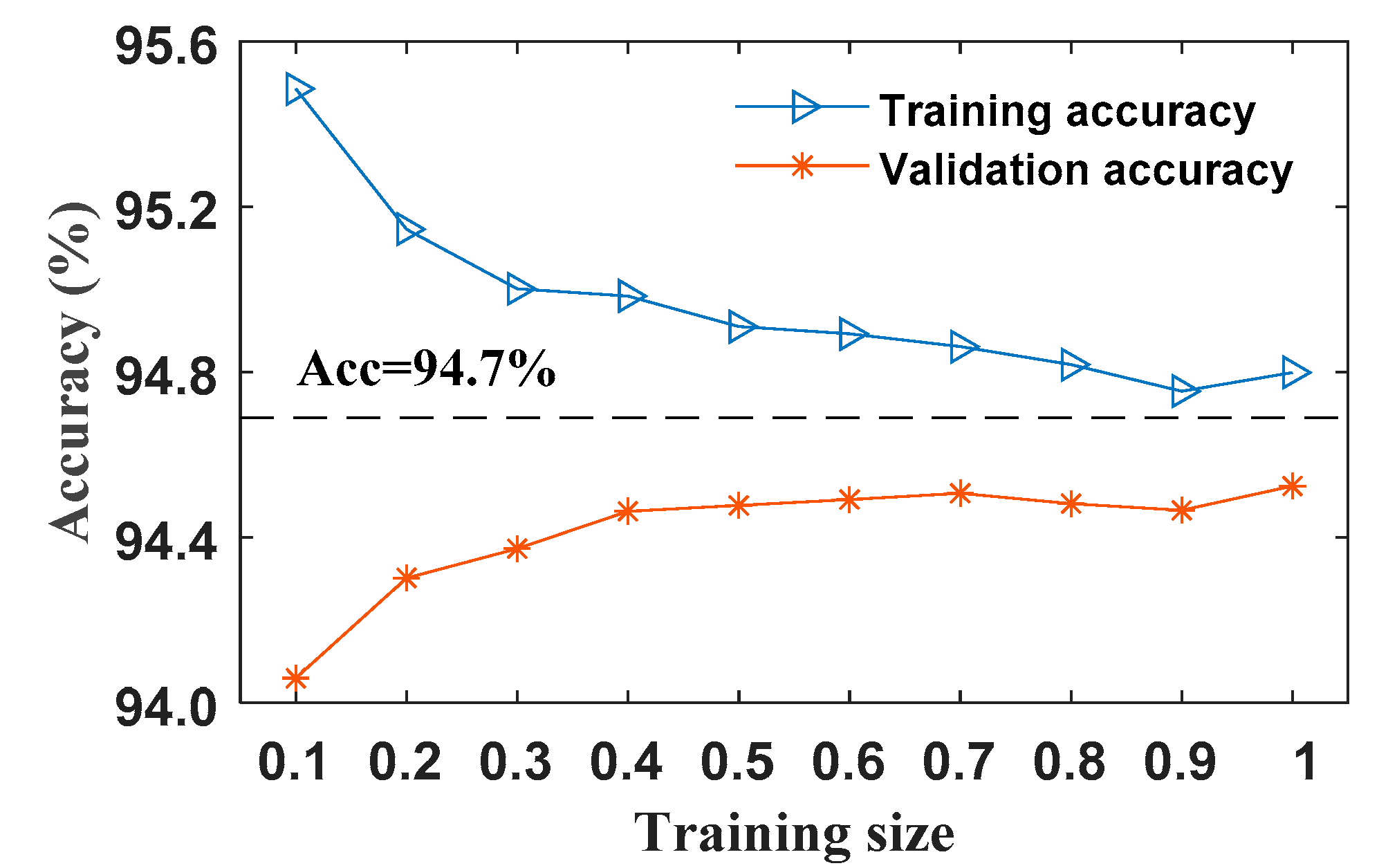

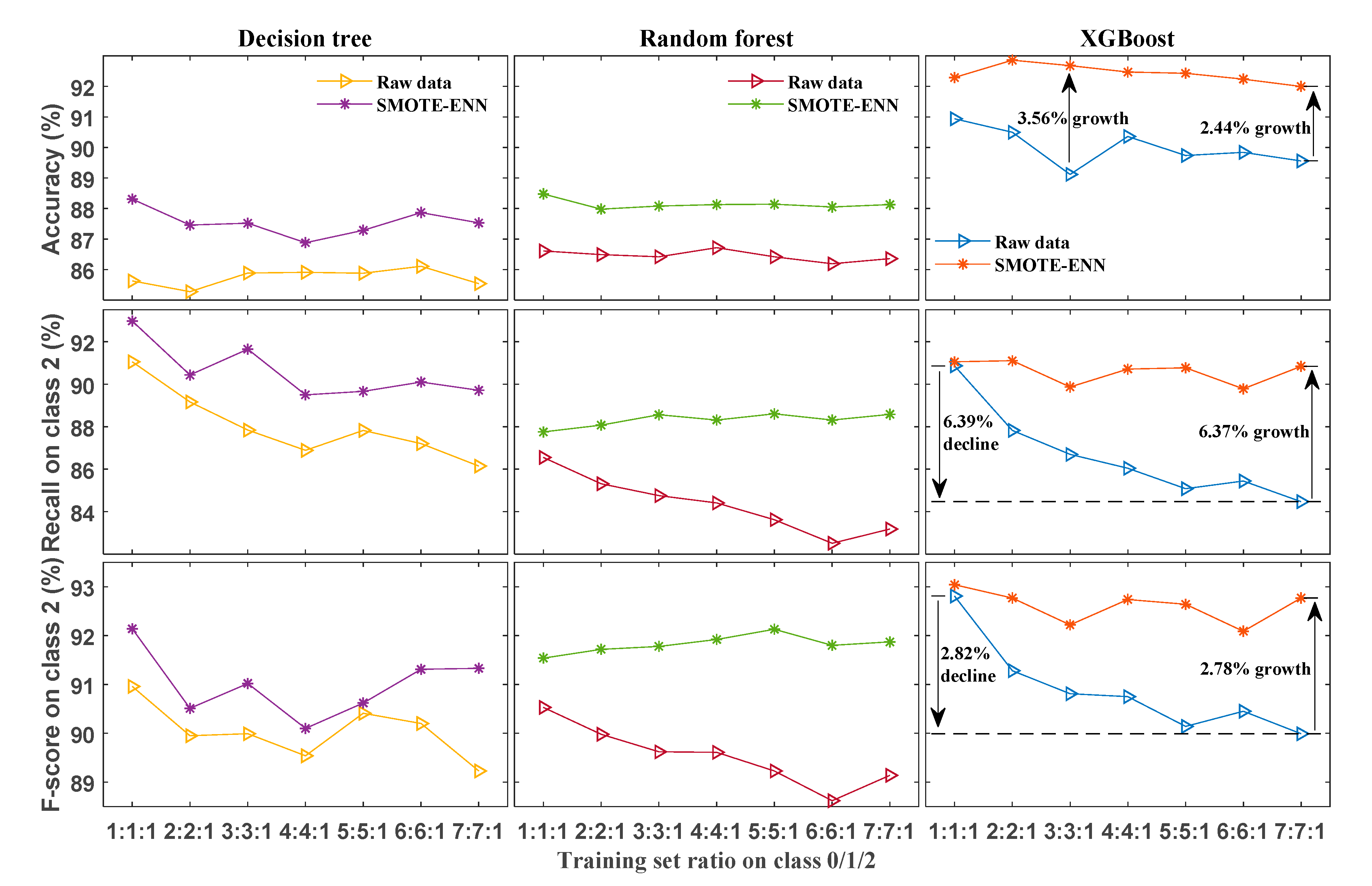


| Dataset | Weak (Class 0) | Moderate (Class 1) | Strong (Class 2) | Total | Ratio |
|---|---|---|---|---|---|
| Training | 155,892 | 136,343 | 38,515 | 349,559 | 4.05:3.54:1 |
| Testing | 18,680 | 14,496 | 5665 | 38,841 | 3.30:2.56:1 |
| Sample Proportion (Class 0/1/2) | 1:1:1 | 2:2:1 | 3:3:1 | 4:4:1 | 5:5:1 | 6:6:1 | 7:7:1 |
| Overall Accuracy (%) | 90.18 | 91.47 | 93.32 | 93.13 | 93.31 | 92.65 | 92.61 |
| Class | Prediction | |||
|---|---|---|---|---|
| 0 | 1 | 2 | ||
| Truth | 0 | |||
| 1 | ||||
| 2 | ||||
| Resampling Technique | Raw Data | Random Oversampling | Random Undersampling | SMOTE | ENN | SMOTE-ENN | |
|---|---|---|---|---|---|---|---|
| Precision (%) | 0 | 99.38 | 99.51 | 99.64 | 99.77 | 99.47 | 99.71 |
| 1 | 82.45 | 83.07 | 85.00 | 85.05 | 86.67 | 87.96 | |
| 2 | 96.02 | 95.14 | 94.83 | 95.19 | 95.77 | 95.00 | |
| Recall (%) | 0 | 87.91 | 87.55 | 89.43 | 89.31 | 92.13 | 92.16 |
| 1 | 97.89 | 97.64 | 97.65 | 97.93 | 97.85 | 97.77 | |
| 2 | 86.55 | 90.15 | 90.75 | 91.17 | 87.47 | 91.60 | |
| F1 score (%) | 0 | 93.29 | 93.15 | 94.26 | 94.25 | 95.66 | 95.79 |
| 1 | 89.51 | 89.77 | 90.89 | 91.04 | 91.93 | 92.61 | |
| 2 | 91.01 | 92.58 | 92.75 | 93.14 | 91.43 | 93.27 | |
| Accuracy (%) | 91.43 | 91.69 | 92.69 | 92.80 | 93.58 | 94.17 | |
| Algorithm | Accuracy (%) | Recall for Class 2 (%) | F1 Score for Class 2 (%) | ||||||
|---|---|---|---|---|---|---|---|---|---|
| Raw Data | SMOTE-ENN | Improvement Ratio | Raw Data | SMOTE-ENN | Improvement Ratio | Raw Data | SMOTE-ENN | Improvement Ratio | |
| CNN | 89.86 | - | - | 73.63 | - | - | 82.15 | - | - |
| SVM | 93.39 | 93.52 | 0.13 | 90.49 | 95.06 | 4.57 | 89.46 | 89.07 | -0.39 |
| Decision tree | 85.39 | 87.36 | 1.97 | 86.73 | 90.41 | 3.68 | 88.94 | 90.98 | 2.04 |
| Random forest | 86.95 | 88.92 | 1.97 | 85.44 | 89.97 | 4.53 | 90.43 | 92.91 | 2.48 |
| XGBoost | 91.43 | 94.17 | 2.74 | 86.55 | 91.60 | 5.05 | 91.04 | 93.27 | 2.23 |
| Training Set | 1 | 2 | 3 | 4 | 5 | 6 | 7 | |
|---|---|---|---|---|---|---|---|---|
| Accuracy (%) | Decision tree | 2.68 | 2.18 | 1.63 | 0.97 | 1.41 | 1.76 | 1.99 |
| Random forest | 1.87 | 1.49 | 1.66 | 1.41 | 1.72 | 1.86 | 1.77 | |
| XGBoost | 1.35 | 2.36 | 3.56 | 2.11 | 2.69 | 2.4 | 2.44 | |
| Recall for class 2 (%) | Decision tree | 1.92 | 1.27 | 3.81 | 2.62 | 1.84 | 2.9 | 3.57 |
| Random forest | 1.2 | 2.76 | 3.81 | 3.9 | 4.98 | 5.8 | 5.4 | |
| XGBoost | 0.19 | 3.28 | 3.18 | 4.67 | 5.69 | 4.34 | 6.37 | |
| F1 score for class 2 (%) | Decision tree | 1.18 | 0.56 | 1.03 | 0.56 | 0.21 | 1.11 | 2.1 |
| Random forest | 1.01 | 1.74 | 2.16 | 2.31 | 2.9 | 3.18 | 2.73 | |
| XGBoost | 0.23 | 1.49 | 1.41 | 1.99 | 2.5 | 1.64 | 2.78 | |
| Dataset | Scintillation Intensity | Total | Ratio | |||
|---|---|---|---|---|---|---|
| Weak (Class 0) | Moderate (Class 1) | Strong (Class 2) | ||||
| Training set | Raw data | 46,610 | 42,514 | 10,876 | 100,000 | 4.05:3.54:1 |
| SMOTE-ENN | 43,201 | 41,468 | 45,976 | 130,645 | 1.04:1:1.11 | |
| Testing set | 1 | 11,945 | 9264 | 10,570 | 31,779 | 1.13:0.87:1 |
| 2 | 11,983 | 14,290 | 5506 | 31,779 | 2.18:2.60:1 | |
| 3 | 13,984 | 13,052 | 4743 | 31,779 | 2.95:2.75:1 | |
| 4 | 14,124 | 14,595 | 3060 | 31,779 | 4.61:4.77:1 | |
| 5 | 14,124 | 15,102 | 2553 | 31,779 | 5.53:5.92:1 | |
| 6 | 16,268 | 13,140 | 2371 | 31,779 | 6.86:5.54:1 | |
| 7 | 14,124 | 15,728 | 1927 | 31,779 | 7.33:8.16:1 | |
| Testing Set | 1 | 2 | 3 | 4 | 5 | 6 | 7 | |
|---|---|---|---|---|---|---|---|---|
| Accuracy (%) | Decision tree | 2.58 | 1.57 | 2.57 | 0.47 | 1.18 | 0.44 | 1.06 |
| Random forest | 2.45 | 2.07 | 2.34 | 0.65 | 1.24 | 0.36 | 0.45 | |
| XGBoost | 6.04 | 2.44 | 2.92 | 0.94 | 0.62 | 1.25 | 0.29 | |
| Recall for class 2 (%) | Decision tree | 4.09 | 2.58 | 10.94 | 9.15 | 9.24 | 8.01 | 8.41 |
| Random forest | 5.82 | 9.23 | 10.61 | 4.51 | 13.90 | 7.00 | 12.61 | |
| XGBoost | 10.59 | 12.60 | 17.69 | 13.98 | 16.17 | 19.40 | 14.06 | |
| F1 score for class 2 (%) | Decision tree | 2.28 | 1.76 | 6.53 | 2.76 | 5.46 | 1.06 | 4.51 |
| Random forest | 3.17 | 5.01 | 5.62 | 1.29 | 7.5 | 2.11 | 5.37 | |
| XGBoost | 6.00 | 6.64 | 9.54 | 7.15 | 8.04 | 10.61 | 6.61 | |
Publisher’s Note: MDPI stays neutral with regard to jurisdictional claims in published maps and institutional affiliations. |
© 2021 by the authors. Licensee MDPI, Basel, Switzerland. This article is an open access article distributed under the terms and conditions of the Creative Commons Attribution (CC BY) license (https://creativecommons.org/licenses/by/4.0/).
Share and Cite
Lin, M.; Zhu, X.; Hua, T.; Tang, X.; Tu, G.; Chen, X. Detection of Ionospheric Scintillation Based on XGBoost Model Improved by SMOTE-ENN Technique. Remote Sens. 2021, 13, 2577. https://doi.org/10.3390/rs13132577
Lin M, Zhu X, Hua T, Tang X, Tu G, Chen X. Detection of Ionospheric Scintillation Based on XGBoost Model Improved by SMOTE-ENN Technique. Remote Sensing. 2021; 13(13):2577. https://doi.org/10.3390/rs13132577
Chicago/Turabian StyleLin, Mengying, Xuefen Zhu, Teng Hua, Xinhua Tang, Gangyi Tu, and Xiyuan Chen. 2021. "Detection of Ionospheric Scintillation Based on XGBoost Model Improved by SMOTE-ENN Technique" Remote Sensing 13, no. 13: 2577. https://doi.org/10.3390/rs13132577
APA StyleLin, M., Zhu, X., Hua, T., Tang, X., Tu, G., & Chen, X. (2021). Detection of Ionospheric Scintillation Based on XGBoost Model Improved by SMOTE-ENN Technique. Remote Sensing, 13(13), 2577. https://doi.org/10.3390/rs13132577






